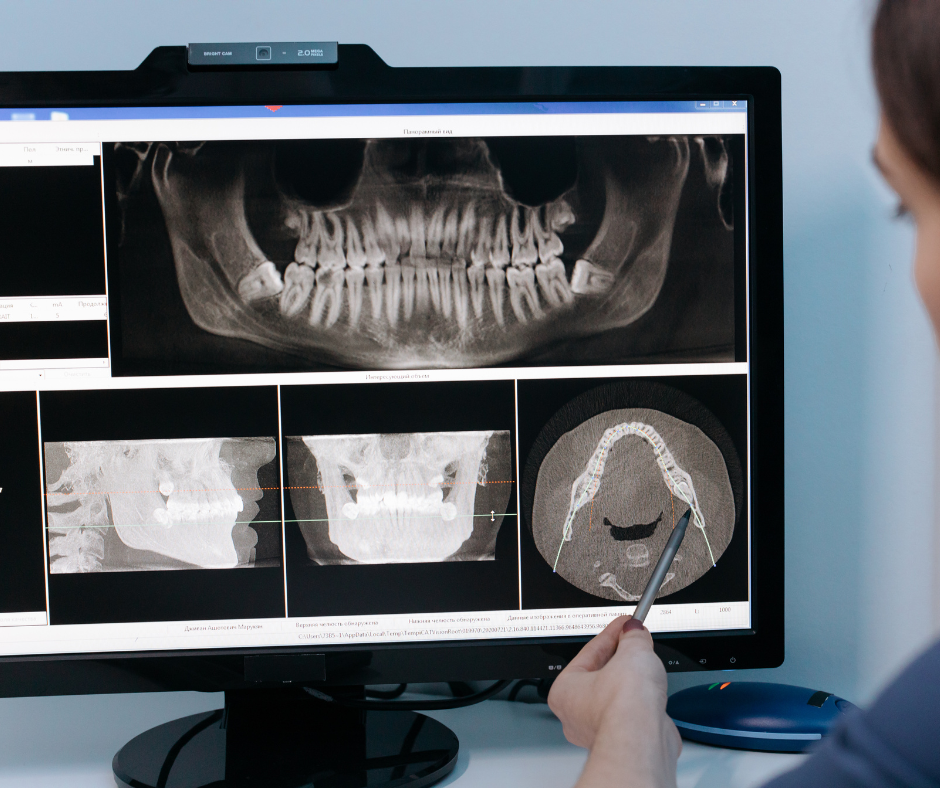Blog
Dental x-rays allow the dentist to see the inside of the mouth, including teeth, bone, and soft tissues. These images provide valuable information that can help identify issues before they progress further.
If your dentist identifies an issue in your x-ray that requires treatment, you will be notified about the next steps to take. Your dentist may recommend treatment for a minor issue and recommend monitoring it instead of immediately treating it. It’s common for dentists to follow-up with an x-ray in six months or a year to see how the issue is progressing. This way, they can confirm that no changes have occurred in the tooth and that it is still healthy enough to remain untreated. Sometimes this can be the case where a cavity has simply not yet progressed into a more serious form of decay.
In other cases, the x-ray may show continue to develop over time, indicating a need for treatment. It’s important for patients who experience pain or inflammation in the mouth to see their dentist as soon as possible to address the underlying problem before it worsens.
Different Types of Dental Radiography
Bitewing X-rays – These X-rays are used to check the health and alignment of your upper and lower teeth, especially your back molars. The bitewing view also reveals how well your teeth come together when you close your mouth. Problems such as cavities and fractures can typically be caught with this type of X-ray.
Periapical X-rays – This type of X-ray shows the entire tooth from the crown to the tip of its roots. It is commonly used to check for any unusual growths or cysts in the gum line that may require a root canal in the future. Periapical X-rays are also helpful in diagnosing periodontal health.
Occlusal X-rays – This X-ray gives the dentist a better view of the upper jaw, temporomandibular joints, and maxillary sinuses. They are used to determine if there are any issues with the bone structure, malocclusion, and disc position between the mandibular and maxillary bones.
Panoramic X-rays – This one-for-all X-ray provides an image of both the upper and lower jaws together as a single image. It is used to capture the entire mouth at once in order to check for issues such as impacted teeth or oral cancer.
Cone Beam Computed Tomography – Also known as CBCT, this 3D imaging technology uses cone-shaped beams instead of flat plates to capture the anatomy of a patient's jaw from multiple angles. The use of these cone-shaped beams creates an image that is far more precise than traditional 2D X-Rays. CBCT scans are often used for planning dental implants, orthodontic treatment, orthognathic surgery, and more.
When are Dental Radiographs Recommended?
Dental radiographs are only used when necessary to help your dentist diagnose or detect any problems with your teeth, roots, gums, and surrounding bone structures. Your dentist will recommend you undergo a dental radiograph based on the observations made during an oral exam and your medical and dental history.
The most common reason for undergoing a dental radiograph is to detect cavities. Your dentist can use an x-ray to identify signs of decay between teeth as well as in between the tooth and the gum line. A cavity will not always show symptoms of pain or sensitivity. Without the use of x-rays, a dentist may have difficulty diagnosing the severity of tooth decay.
Caries that go untreated can cause pain, infection, and even lead to tooth loss. With regular exams and the use of x-rays, your dentist can identify signs of decay early and recommend treatments such as fillings to repair and prevent damage. Cavities that are not treated effectively by a dentist will leave teeth and gums susceptible to infection and disease.
Is Dental Radiography Safe?
Dental radiography is very safe when taken with digital imaging technology. These machines use the lowest amount of radiation possible, and with proper technique, the amount of radiation is minimal. While the risk is very low, we recommend that pregnant women avoid having dental x-rays performed unless absolutely necessary. If you are breastfeeding, you should speak with your dentist about precautions to take while undergoing dental care. Your dentist will be able to answer any questions you have regarding your safety during dental treatments.
Contact Legacy Dental Clinic today at (825) 467-8888 to schedule an appointment with Dr. Jennifer Nguyen! We are located at 4224 Gateway Blvd NW. Edmonton, AB.
Location
4224 Gateway Blvd NW,
Edmonton, AB , Canada T6J 7K1
Office Hours
MON10:00 am - 6:00 pm
TUE8:00 am - 6:00 pm
WED - FRI8:00 am - 4:30 pm
SAT8:00 am - 3:00 pm
SUNClosed





